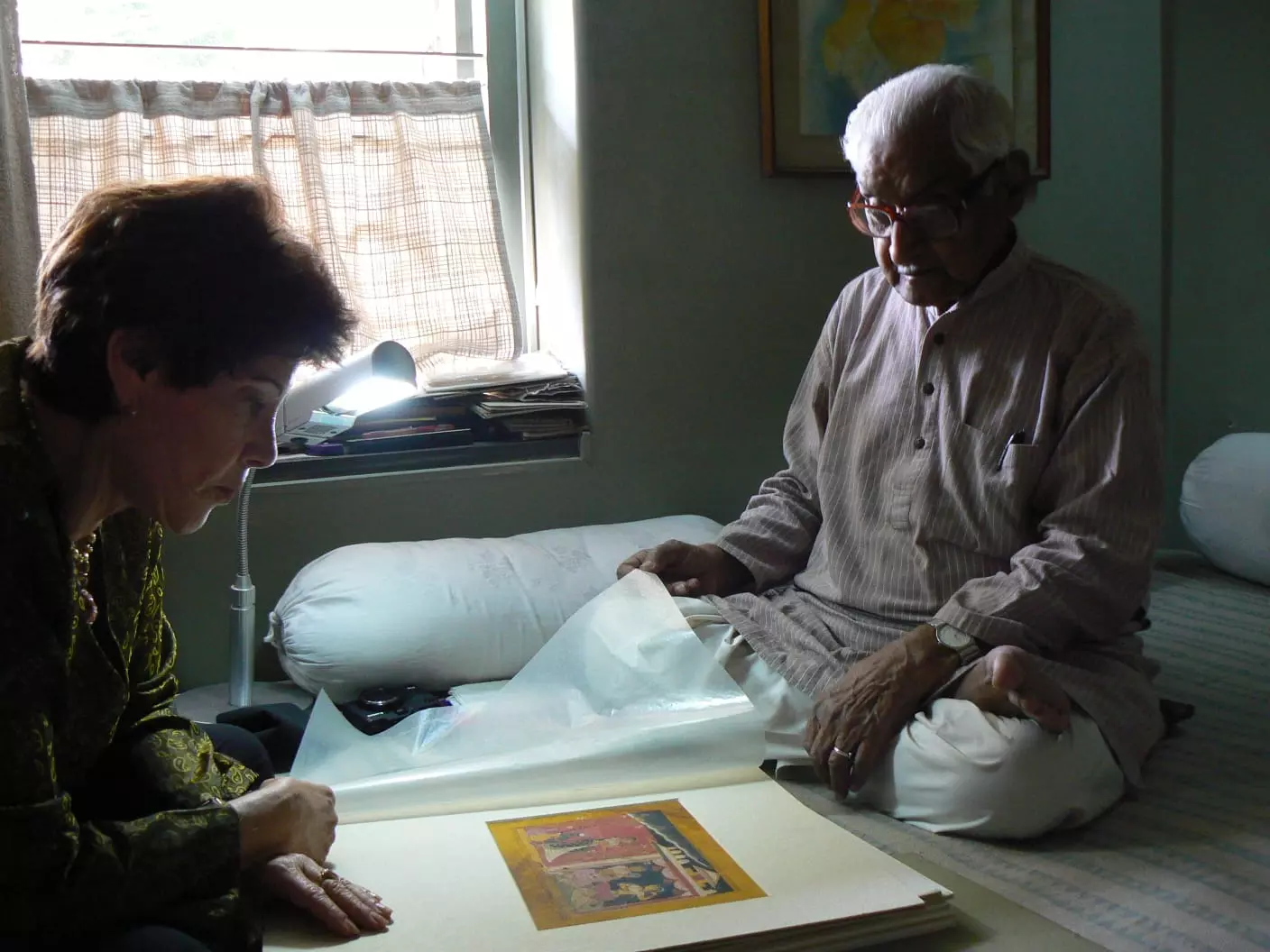Jagdish Mittal: God-father of art in Hyderabad passes away

Hyderabad: Renowned art collector Jagdish Chandra Mittal, a Padma Shri awardee who had made the city his home, and museum, passed away on Tuesday afternoon during his 100th year.
He is survived by three daughters. His wife Kamla, with whom he set up a museum here, predeceased him.
Mittal, an artist turned collector and art historian, had entered his 100th year on September 26 last year. His last rites will be performed on Wednesday.
Mittal, who was born in Mussorie, now in Uttarakhand, shifted to Bulandshahr in Uttar Pradesh. He and Kamla graduated from Kala Bhavan, Shantiniketan, in 1945 and settled in Hyderabad in the 1950s. In 1976, they established the Jagdish and Kamla Mittal Museum of Indian Art.
A point of reference for art institutions around the globe, Mittal leaves behind a repository of over 2,000 art pieces that span two millennia, a legacy that is tied to the lives of those he touched.
Chief Minister A. Revanth Reddy, condoling the death of the renowned collector, said Mittal’s “immense efforts to preserve and promote Indian art and heritage were invaluable.” He said the legacy left behind through the Jagdish and Kamla Mittal Museum of Indian Art would continue to inspire generations of artists, art lovers and historians.
The modest home in Domalguda, which is a treasure trove of paintings, sculptures, and manuscripts collected over time, place, and genre, is the vision of the Mittals, who saw value where others saw none.
"He is not gone. He is with me. He is with us," said artist Laxma Goud, his voice faltering, as he grappled with a loss that felt personal. Mittal, for him, was far more than a collector of art, he was a collector of lives, of potential, of history."I am what I am because of him," noted the artist, a Padma Shri awardee himself.
Goud's relationship with Mittal is half a century old. It began in the artist's second year of college when Mittal recognised his potential and acquired his works. "He was like my father, teacher, mentor, professor," Goud said.
"He created opportunities for so many of us. You name Hyderabad Art Society, fellowships for young artists, recommending names for higher studies, acquiring works to ensure we survived - all was Jadgish Mittal."
Mittal's meticulousness was beyond curation and nurturing careers. Artist Laxman Aelay credited Mittal for his own rise in the art world.
"He made me," Aelay said simply.
It was Mittal who inaugurated Aelay's first solo exhibition in 1999 and was also his first collector, acquiring over 20 of his works. "He even wrote the catalogue for my second show in Mumbai," Aelay recalled.
It wasn't just painters whose lives Mittal impacted. "He was very fond of my music. He would introduce me to everyone as 'mera beta' (my son),'" said his close associate and musician Jaywant Naidu.
"He often narrated how his collection began with minimum savings. Once, he couldn't afford a piece he wanted, but Kamla-ji, his wife, brought out some savings to make it happen. That's how much they believed in what they were building."This shared vision culminated in the Jagdish and Kamla Mittal Museum of Indian Art, a collection that scholars and connoisseurs from around the world revered.
Despite its acclaim, Mittal's dream of a permanent home for the museum remained unfulfilled during his lifetime. "It saddens me deeply that he didn't see it take shape," Naidu said.
Nonetheless, Mittal's home in Domalguda, a simple single-storey structure, became a treasure trove of artworks.
B. Narsing Rao, artist and filmmaker, narrated scenes of days spent there. "We would sit for hours surrounded by handicrafts, listening to him narrate their histories. His library alone could be a museum," Rao said. It was also here that Mittal identified artists who would later become stalwarts of Indian art.
"He recognised talent before anyone else - Surya Prakash, Vaikuntam, you name them. Vaikuntam once told me Mittal bought 30 of his paintings in one go. That's what launched him."
Mittal's dedication to preserving the past often came at a personal cost. His life was a series of sacrifices, be it financial, professional, and emotional, but all in service of art.
When it cames to Hyderabad, Mittal was its cultural conscience, a man whose life's work made a vital part of the city's artistic heritage. His influence lived in the artists he mentored, the traditions he revived, and the respect he commanded across disciplines.
As Goud said, "We have lost someone who was everything to us." Nonetheless, in every artwork he saved, every artist he supported, and every life he changed, Jagdish Mittal remains. Not in the past, but here, he is alive in the art, in the memories, in the people.

